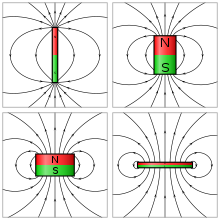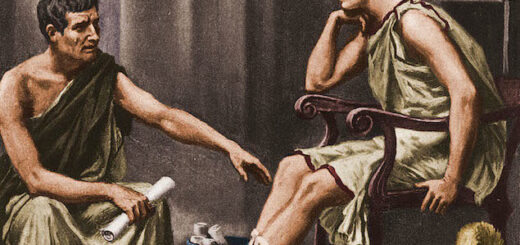Fun with Magnets
solved exercise of fun with magnets

Summary
The substances having the property of attracting iron are now known as magnet, that produces a magnetic field . This magnetic field is invisible but is responsible for the most notable property of a magnet: a force that pulls on other ferromagnetic materials , such as iron, and attracts or repels other magnets.
How Magnets Were Discovered

There was a shepherd named Magnets, who lived in ancient Greece. He used to take his herd of sheep and goats to the nearby mountains for grazing. He would take a stick with him to control his herd. The stick had a small piece of iron attached at one end. One day he was surprised to find that he had to pull hard to free his stick from a rock on the mountain side. It seemed as if the stick was being attracted by the rock. The rock was a natural magnet and it attracted the iron tip of the shepherd’s stick. It is said that this is how natural magnets were discovered. Such rocks were given the name magnetite.
Artificial Magnets: Artificial magnets are magnets made by people you have permanent magnets whose magnetic strength never fades and you have temporary magnets that aren’t always magnetic and that you can turn on via an electric current or another magnet.The process of making magnets from pieces of iron was discovered. These are known as artificial magnets.
MAGNETIC AND NON-MAGNETIC MATERIALS

Magnet attracts certain materials whereas some do not get attracted towards magnet. The materials which get attracted towards a magnet are magnetic – for example, iron, nickel or cobalt.
The materials which are not attracted towards a magnet are non-magnetic.
Ex: Rubber, Coins, feather and leather.
POLES OF MAGNET

The magnetic pole is the region at each end of a magnet where the external magnetic field is the strongest. Poles of a magnet may refer to a magnetic monopole which is a hypothetical elementary particle. Magnetic poles of the astronomical bodies is a special case of magnets.
FINDING DIRECTIONS
For centuries, travellers have been making use of this property of magnets to find directions. It is said that in olden days, travellers used to find directions by suspending natural magnets with a thread, a device was developed based on this property of magnets. It is known as the compass. A compass is usually a small box with a glass cover on it. A magnetized needle is pivoted inside the box, which can rotate freely The compass also has a dial with directions marked on it. The compass is kept at the place where we wish to know the directions. Its needle indicates the north-south direction when it comes to rest. The compass is then rotated until the north and south marked on the dial are at the two ends of the needle. north-pole of the magnetic needle, it is usually painted in a different color.
MAKE YOUR OWN MAGNET
Take a rectangular piece of iron. Place it on the table. Now take a bar magnet and place one of its poles near one edge of the bar of iron. Without lifting the bar magnet, move it along the length of the iron bar till you reach the other end. Now, lift the magnet and bring the pole (the same pole you started with) to the same point of the iron bar from which you began Move the magnet again along the iron bar in the same direction as you did before. Repeat this process about 30-40 times. Bring a pin or some iron filings near the iron bar to check whether it has become a magnet. If not, continue the process for some more time. Remember that the pole of the magnet and the direction of its movement should not change. You can also use an iron nail, a needle or a blade and convert them into a magnet.
ATTRACTION AND REPULSION BETWEEN MAGNETS.

When two equal magnets touch each other, the attraction between two unequal poles is 5-10% stronger than the repulsion of equal poles. That is due to the alignment of the molecular magnets in a magnet. Magnets loose their properties if they are heated, hammered or dropped from some height, magnets become weak if they are not stored properly. To keep them safe, bar magnets should be kept in pairs with their unlike poles on the same side. They must be separated by a piece of wood while two pieces of soft iron should be placed across their ends. For horse-shoe magnet, one should keep a piece of iron across the poles. Keep magnets away from cassettes, mobiles, television, music system, compact disks (CDs) and the computer.
Exercise
Fill in the blanks in the following
(i) Artificial magnets are made in different shapes such as bar magnet, horse show, and cylindrical.
(ii) The Materials which are attracted towards a magnet are called magnetic
(iii) Paper is not a magnetic material.
(iv) In olden days, sailors used to find direction by suspending a piece of magnet
.
(v) A magnet always has two poles.
II.State whether the following statements are true or false
(i) A cylindrical magnet has only one pole. (False)
(ii) Artificial magnets were discovered in Greece.(False)
(iii) Similar poles of a magnet repel each other.(True)
(iv) Maximum iron filings stick in the middle of a bar magnet when it is brought
near them.(False)
(v) Bar magnets always point towards North-South direction.(true)
(vi) A compass can be used to find East-West direction at any place.(true)
(vii) Rubber is a magnetic material(False)
3.It was observed that a pencil sharpener gets attracted by both the poles of a
magnet although its body is made of plastic. Name a material that might have
been used to make some part of it
Ans:Iron magnet might have been used some part of it.
4.Column I shows different positions in which one pole of a magnet is placed near
that of the other. Column II indicates the resulting action between them for
each situation. Fill in the blanks
| Column I | Column II |
| N-N | Repulsion |
| N……………………… | Attraction |
| S-N | Attraction |
| ………………….S | Replusion |
5.Write any two properties of a magnet
Ans:It attracts objects made by nickel, cobalt, and Iron
Magnets direct the side in north and south direction.
6.Where are poles of a bar magnet located?
Ans:On two ends of bar magnets
7.A bar magnet has no markings to indicate its poles. How would you find out
near which end is its north pole located?
Ans:A bar magnet is hanged in air and the end point to the north is the north pole of the magnet.
8.You are given an iron strip. How will you make it into a magnet?
Ans:Take a bar magnet and keep it contact with one end of the pole with one end of bar iron.
With out lifting the bar magnet move it along the length of the iron bar till you reach the other end.
Lift the magnet and bring the pole to the same point of the iron bar from which we begin.
Move the magnet again along the iron bar in the same direction as you did before.
9.How is a compass used to find directions?
Ans:A compass always shows the north and south direction by keeping this as a referencewe can always find east and west direction also.
10. A magnet was brought from different directions towards a toy boat that has been floating in water in a tub. Affect observed in each case is stated in
Column I. Possible reasons for the observed affects are mentioned in
Column II. Match the statements given in Column I with those in Column II
| Column I | Column II |
| The boat gets attracted towards the magnet | The boat is fitted with a magnet with a north pole towards its head |
| The boat is not affected by the magnet | The boat is fitted with a magnet with a south pole towards its head |
| The boat moved towards the magnet when the north pole is brought near its head | The boat has a small magnet fixed along its length |
| A boat moves away from the magnet when the north pole is brought near its head | The boat is made up of magnetic material |
| Boat floats without changing its direction | The boat is made up of non-magnetic material |
Ans:
| Column I | Column II |
| The boat gets attracted towards the magnet | The boat is made up of magnetic material |
| The boat is not affected by the magnet | The boat is made up of non-magnetic material |
| The boat moved towards the magnet when the north pole is brought near its head | The boat is fitted with a magnet with the south pole towards its head |
| A boat moves away from the magnet when the north pole is brought near its head | The boat is fitted with a magnet with a north pole towards its head |
| Boat floats without changing its direction | The boat has a small magnet fixed along its length |




























